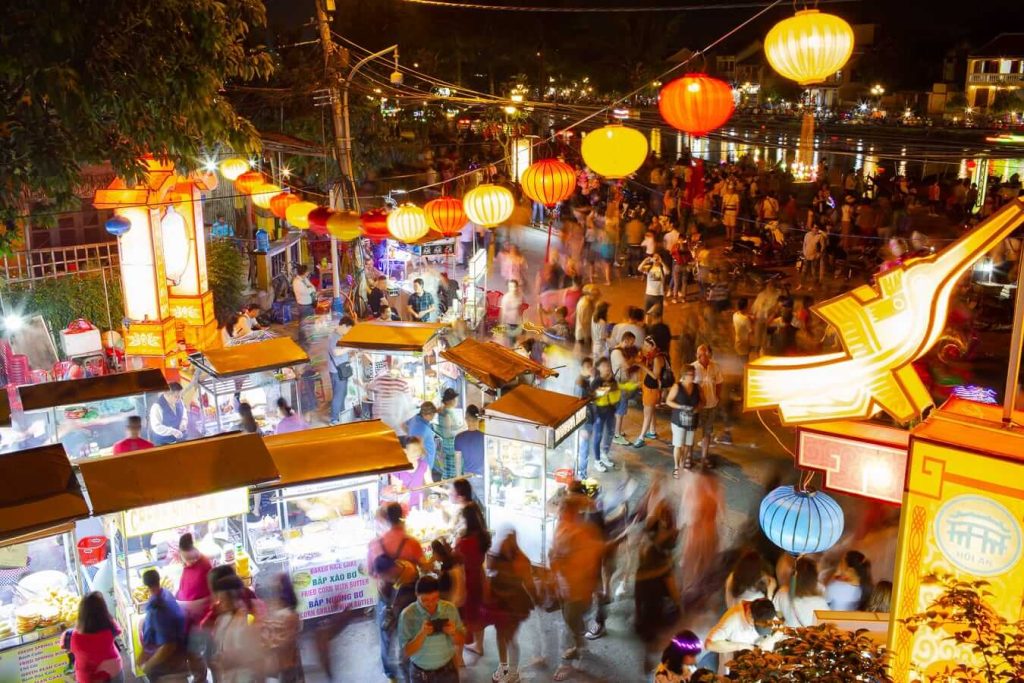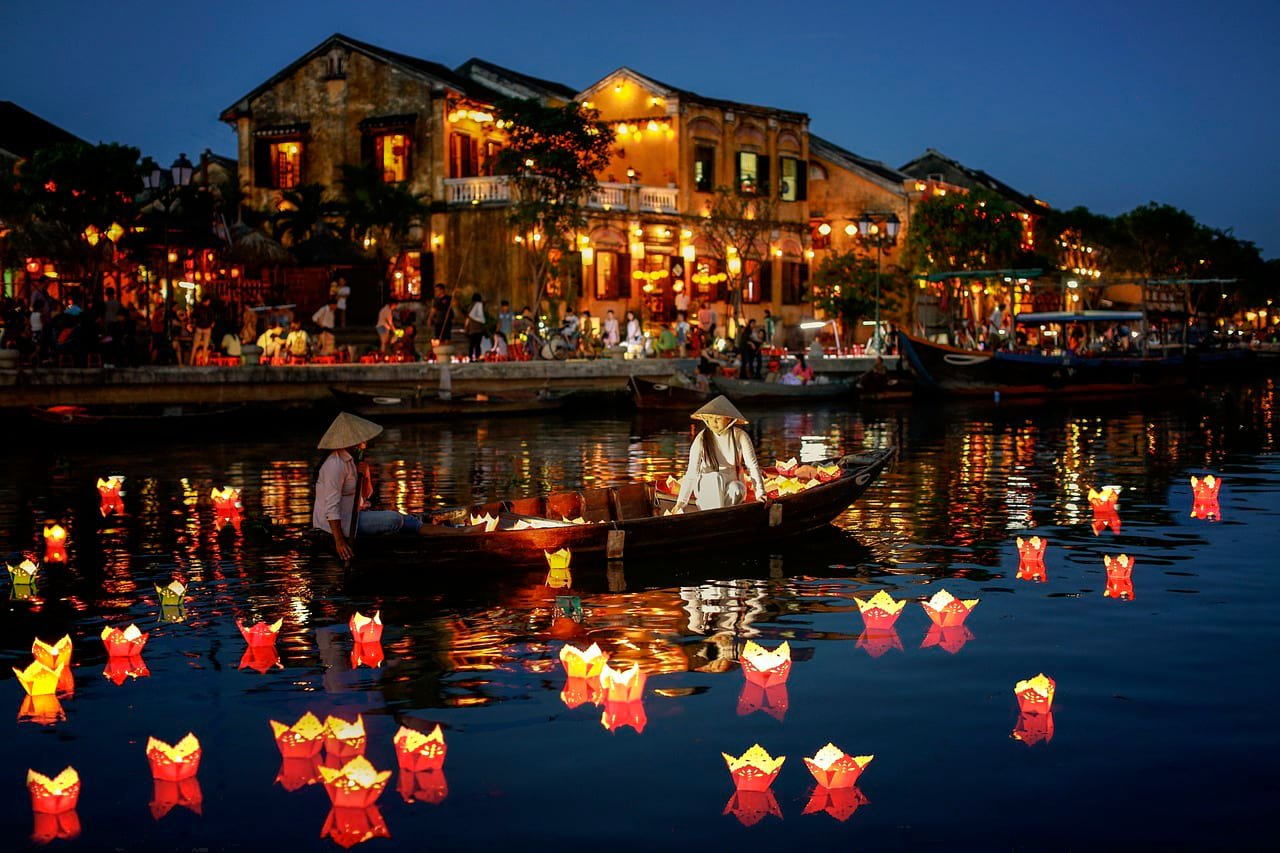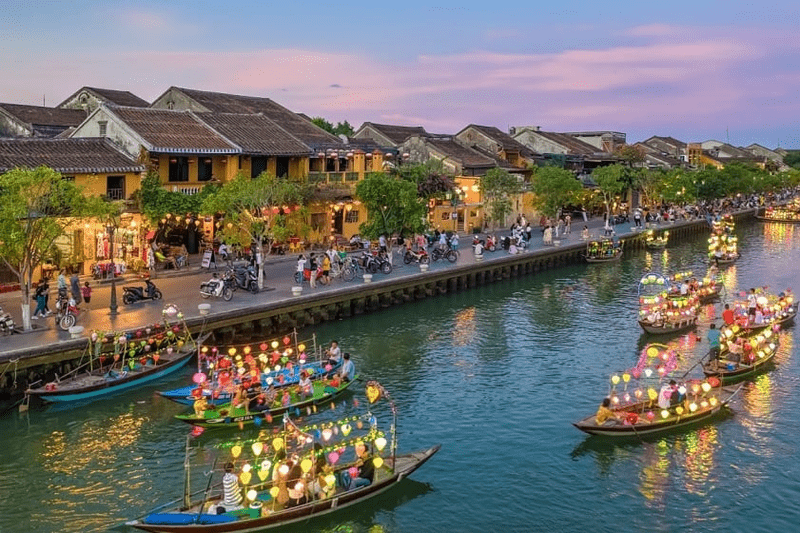
Hoi An, a picturesque ancient town nestled along Vietnam’s central coast, captivates visitors with its timeless beauty, rich history, and vibrant culture. Steeped in centuries of trading heritage, its UNESCO-listed Old Town boasts charming cobblestone streets, well-preserved merchant houses, and atmospheric temples reflecting a fusion of Vietnamese, Chinese, Japanese, and European influences. In addition to its architectural marvels, Hoi An offers delectable cuisine, artisanal crafts, and idyllic beaches that combine traditional Vietnamese charm with modern conveniences. This article by Vietnam Tour 247 will give you a brief overview and information about Hoi An.
Overviews Hoi An Vietnam

Hoi An, nestled on Vietnam’s central coast, is a captivating blend of history, culture, and natural beauty. Its ancient town is recognized as a UNESCO World Heritage Site and transports visitors to a bygone era. Centuries-old buildings adorned with vibrant lanterns line the narrow cobblestone streets, while iconic landmarks like the Japanese Covered Bridge and Quan Cong Temple exude an enduring charm. The city’s diverse culinary scene reflects its rich cultural heritage, with Vietnamese, Chinese, Japanese, and European flavors enticing visitors at bustling markets, street food stalls, and interactive cooking classes. Hoi An’s reputation as a top destination for tailor-made clothing attracts visitors from around the globe, while the tranquil Thu Bon River meandering through the city adds to its romantic ambiance. Beyond the historic center, pristine beaches like An Bang and Cua Dai beckon with golden sands and clear waters, providing a relaxing haven. Vibrant festivals such as the Lantern Festival infuse the city with energy, as countless lanterns illuminate the night sky. Exploring Hoi An’s countryside by bicycle or guided tours reveals a picturesque landscape of lush rice paddies, charming villages, and traditional craft workshops, offering authentic cultural experiences. With its enduring beauty and warm hospitality, Hoi An promises an unforgettable journey through the heart of Vietnam.
Why is Hoi An, Vietnam’s Ancient Town, so popular with foreign tourists?
Hoi An, Vietnam’s Ancient Town, holds a special allure for foreign tourists due to several compelling reasons:
1. Historical Charm
The historical charm of Hoi An is a testament to its beautifully maintained ancient architecture, which seamlessly weaves together influences from Vietnam, China, Japan, and Europe. Wander through its maze of old buildings, meandering streets, and revered temples, and you’ll find yourself transported back in time, immersing in the diverse tapestry of Vietnam’s cultural legacy.
2. Cultural Diversity
Hoi An thrived as a bustling trading hub in Southeast Asia for centuries, drawing merchants from diverse corners of the globe. This vibrant history of multicultural exchange has left an indelible mark on the town, evident in its eclectic architecture, tantalizing cuisine, and rich tapestry of traditions. Delve into the intricacies of Hoi An’s past, and you’ll discover a captivating destination brimming with opportunities for immersive cultural exploration and discovery.
3. Scenic Beauty
Nestled gracefully along the banks of the Thu Bon River, Hoi An unveils breathtaking vistas, particularly as the sun rises and sets. The tranquil ambiance of its riverside locale and the enchanting glow of lantern-lit streets and verdant surroundings paint a picture of serenity and romance that enchants all who visit. Immerse yourself in the tranquil beauty of Hoi An’s riverside charm, where every moment is imbued with a sense of timeless tranquility and allure.
4. Shopping and Handicrafts
Hoi An’s vibrant markets are celebrated havens where travelers can immerse themselves in the rich tapestry of Vietnamese culture, browsing through an array of traditional crafts, apparel, and keepsakes. From bespoke garments tailored to perfection to exquisitely crafted lanterns illuminating the night, the town’s markets brim with an abundance of distinctive treasures, ensuring that every visitor finds something special to cherish and carry home as a memento of their unforgettable journey.
5. Culinary Delights
Vietnamese cuisine has garnered global acclaim for its emphasis on fresh, flavorful ingredients and its wide array of dishes. This culinary tradition shines brightly in Hoi An, offering a rich tapestry of flavors and experiences. From the bustling street food stalls brimming with tantalizing treats to the cozy local eateries serving up authentic delicacies, the town’s culinary scene beckons travelers on a delectable journey of discovery. For those eager to delve deeper into the secrets of Vietnamese cooking, Hoi An also presents ample opportunities to participate in cooking classes, where visitors can learn the art of crafting traditional dishes from expert chefs, ensuring an unforgettable culinary adventure that tantalizes the taste buds and feeds the soul.
6. Lantern Festival
The town is famous for its monthly Full Moon Lantern Festival, during which thousands of colorful lanterns illuminate the streets. This enchanting event features traditional performances, cultural activities, and a lively atmosphere that attracts tourists and locals alike.
Hoi An’s historical significance, cultural richness, natural beauty, and culinary delights make it a favorite destination for foreign tourists seeking an immersive and unforgettable travel experience in Vietnam.
What to see in Vietnam Hoi An Ancient Town
As one of Vietnam’s UNESCO World Heritage Sites, Hoi An Old Town is home to charming architecture, cultural landmarks, and a vibrant street life. You should make a stop at these attractions while you are here:
1. Japanese Covered Bridge (Chùa Cầu)
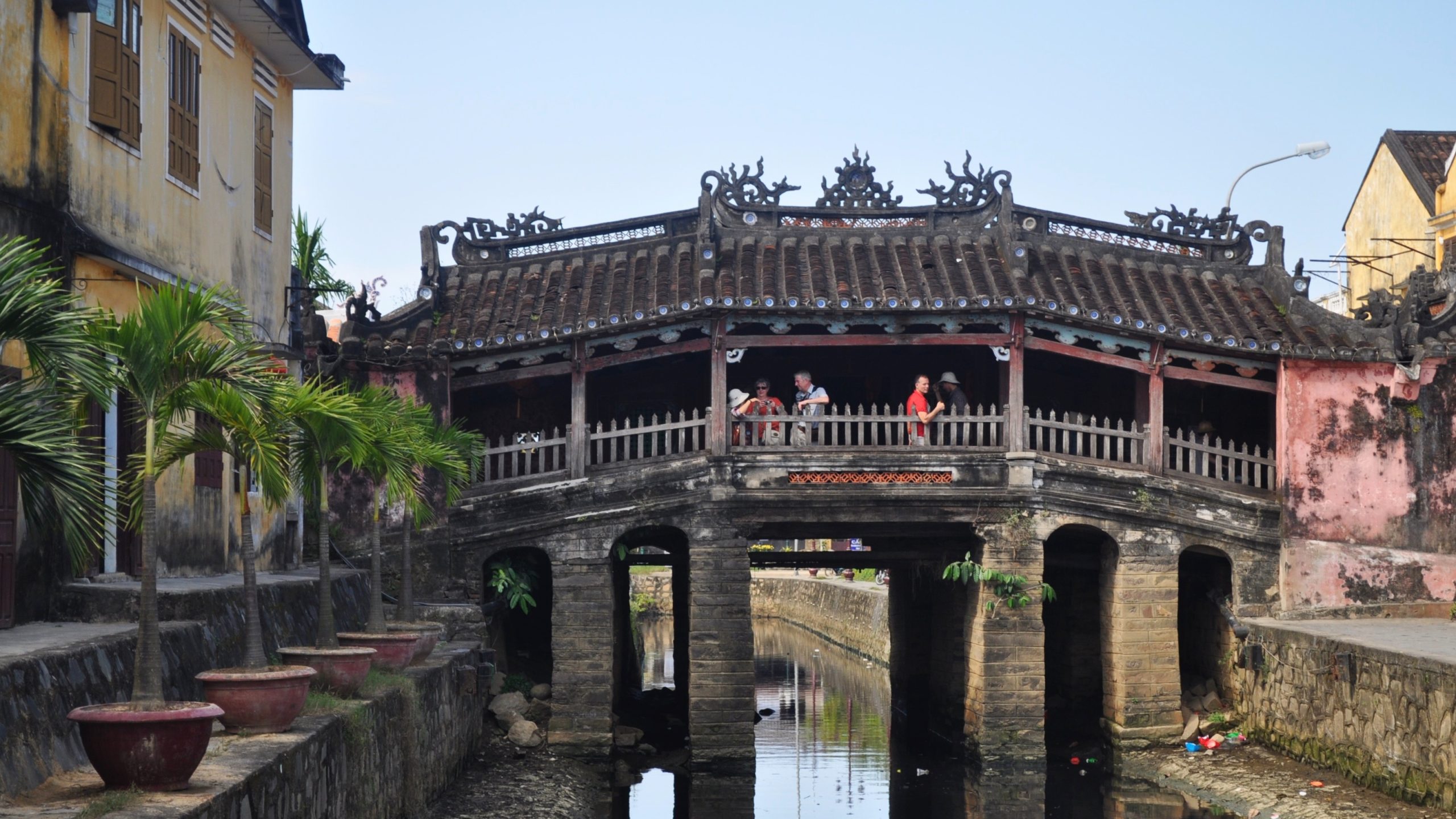
The Japanese Covered Bridge, known locally as Chùa Cầu, is one of Hoi An’s most iconic landmarks and a symbol of the town’s rich history. This beautiful bridge, dating back to the 18th century, is a testament to the influence of Japanese traders in Hoi An during the town’s heyday as a bustling port.
The bridge spans a small canal and connects the Japanese and Chinese quarters of Hoi An’s Old Town. Its unique design features a covered roof, which provides shelter from the elements, and intricate carvings depicting mythical creatures such as dogs and monkeys.
According to local legend, the construction of the bridge was funded by the Japanese community to reconcile the Japanese and Chinese residents of Hoi An, who were once in conflict. It’s also believed that the bridge was built to ward off evil spirits, as it is adorned with statues of dogs and monkeys, symbols of protection in Japanese culture.
Today, the Japanese Covered Bridge remains a popular tourist attraction, drawing visitors to admire its beauty, learn about its history, and photograph this picturesque landmark. It’s a must-visit destination for anyone exploring Hoi An’s Old Town and offers a glimpse into its multicultural past.
2. Assembly Halls (Hội Quán)
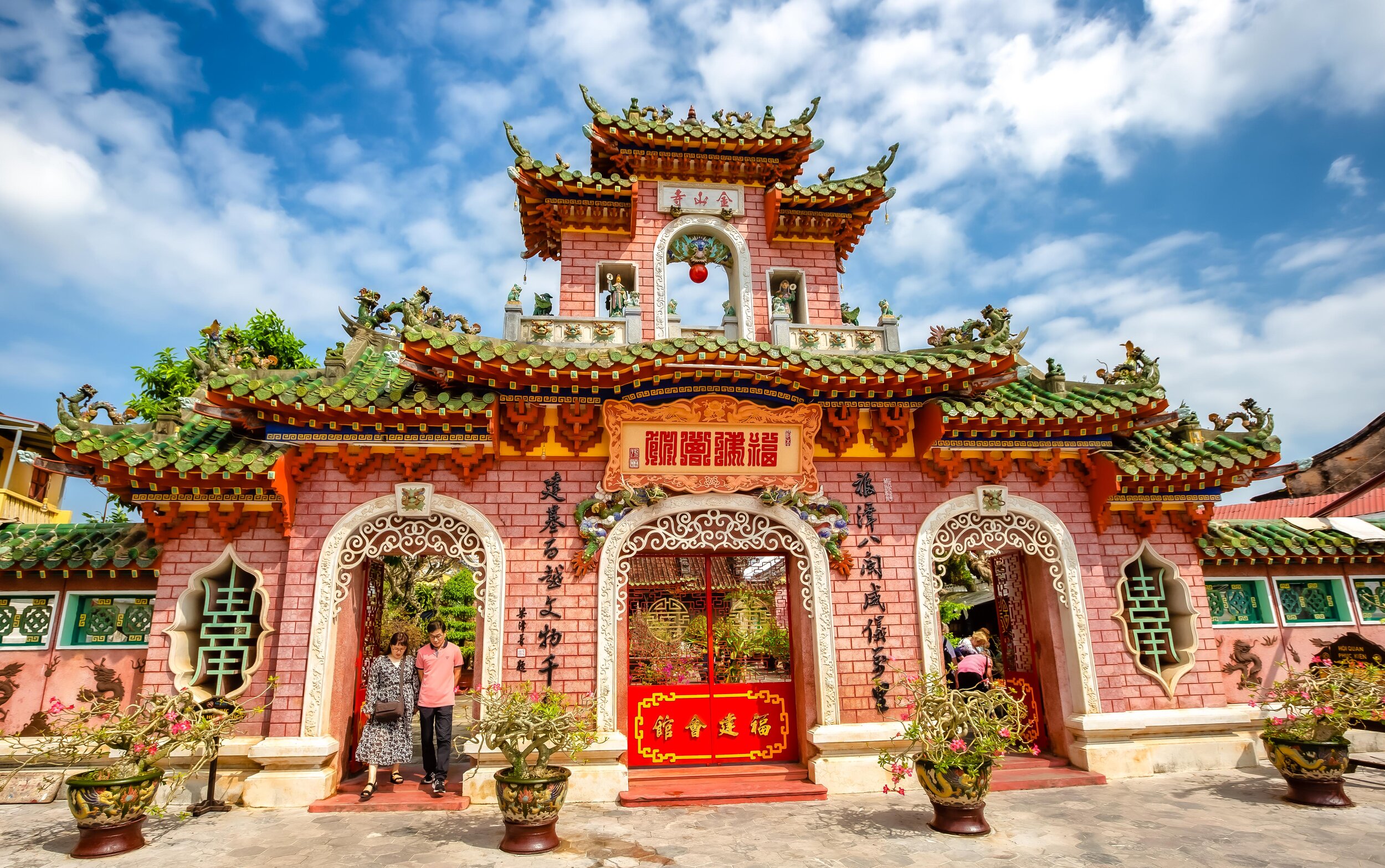
The Assembly Halls, known as Hội Quán in Vietnamese, are significant cultural landmarks in Hoi An’s Old Town. Various ethnic Chinese communities constructed these ornate buildings as social and religious gathering places. Each assembly hall served as a center for community activities, worship, and trade, reflecting Hoi An’s cultural diversity and prosperity during its trading heyday.
Hoi An has several notable assembly halls, each with its unique architectural style, decorative motifs, and historical significance. Some of the most famous ones include:
Cantonese Assembly Hall (Hội Quán Quảng Đông), Hainan Assembly Hall (Hội Quán Hải Nam), Fujian Assembly Hall (Hội Quán Phúc Kiến), Chaozhou Assembly Hall (Hội Quán Triều Châu).
Visitors to Hoi An can explore these assembly halls to admire their architectural beauty, learn about their cultural significance, and gain insight into the diverse heritage of the town. The assembly halls often host cultural events, festivals, and performances, providing opportunities for visitors to experience the vibrant traditions of Hoi An’s Chinese community.
3. Hoi An Market
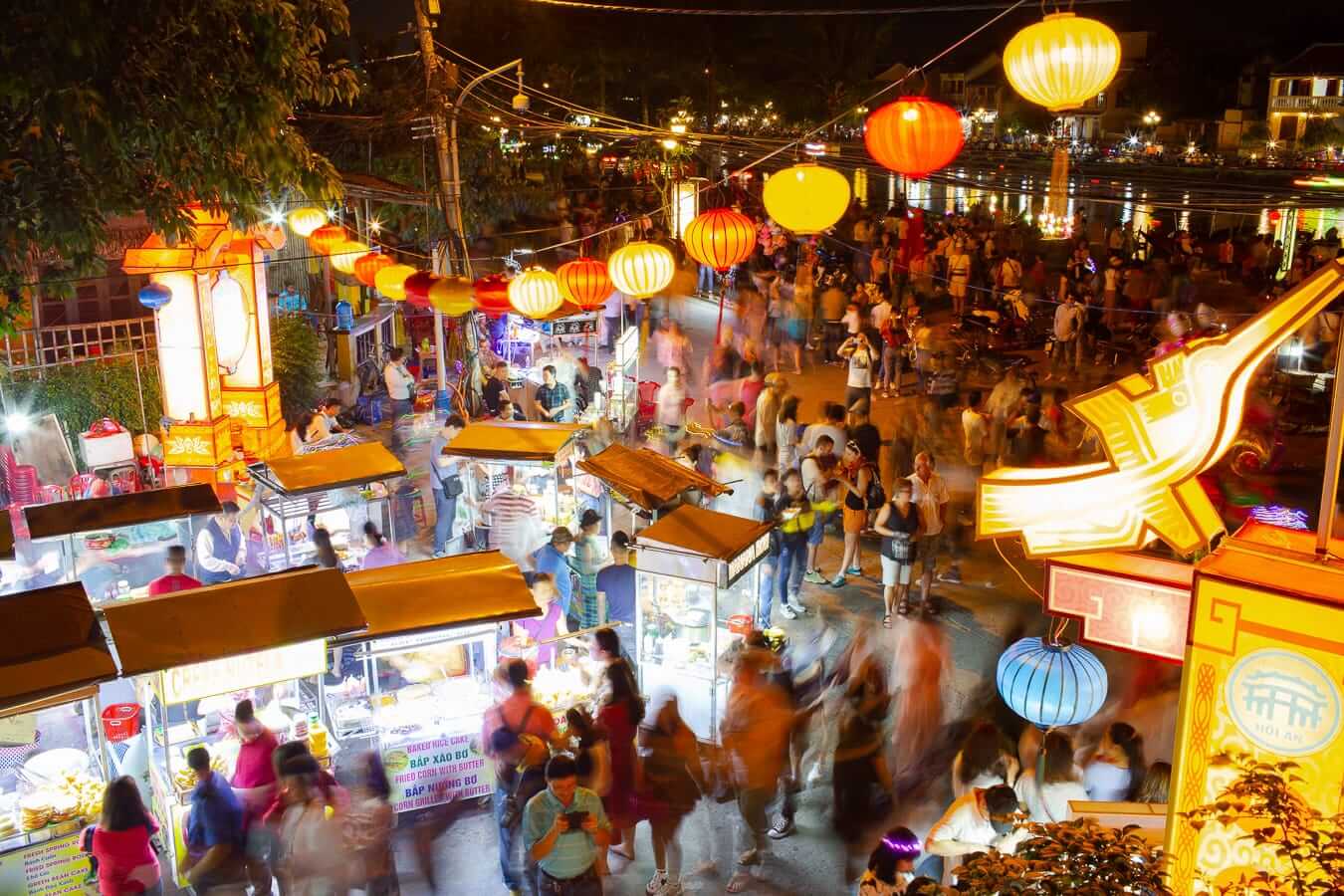
Hoi An Market is a bustling hub of activity where visitors can immerse themselves in the vibrant atmosphere of Vietnamese daily life. Located in the heart of Hoi An’s Old Town, this central market offers a kaleidoscope of sights, sounds, and smells that capture the essence of the region’s culture and cuisine.
At the market, you’ll find an array of fresh produce, including fruits, vegetables, herbs, and spices, sourced from local farmers and vendors. Take in the vibrant colors and fragrant aromas as you wander through the aisles, interacting with vendors and sampling exotic fruits and snacks.
In addition to fresh ingredients, the Hoi An Market is a treasure trove of handicrafts, textiles, and souvenirs, ranging from intricately embroidered clothing and silk lanterns to handmade pottery and wood carvings. Browse through the stalls to discover unique items that make perfect gifts or mementos for your visit to Hoi An.
One of the highlights of the market experience is sampling the delicious street food available at numerous stalls and eateries scattered throughout the area. Indulge in local specialties like banh mi (Vietnamese sandwich), pho (noodle soup), com ga (chicken rice), and fresh seafood dishes prepared right before your eyes. Don’t forget to try Vietnamese coffee or fruit smoothies for a refreshing treat.
4. Thu Bon River

Hop on a calm boat trip down the Thu Bon River to see Hoi An’s Old Town and pretty countryside. As you float, you’ll see lovely views of the town and nature. Check out cool buildings from your boat, like the Japanese Covered Bridge and colorful halls along the riverbank. See green fields, trees, and rice fields as you go. Pass by villages and see people fishing. You’ll hear water, wind, and birds, making it peaceful. It’s a great break from busy life! Whether alone or with friends, it’s a fun way to enjoy Hoi An’s beauty and history. Just relax and enjoy the ride!
5. Hoi An Lantern Festival
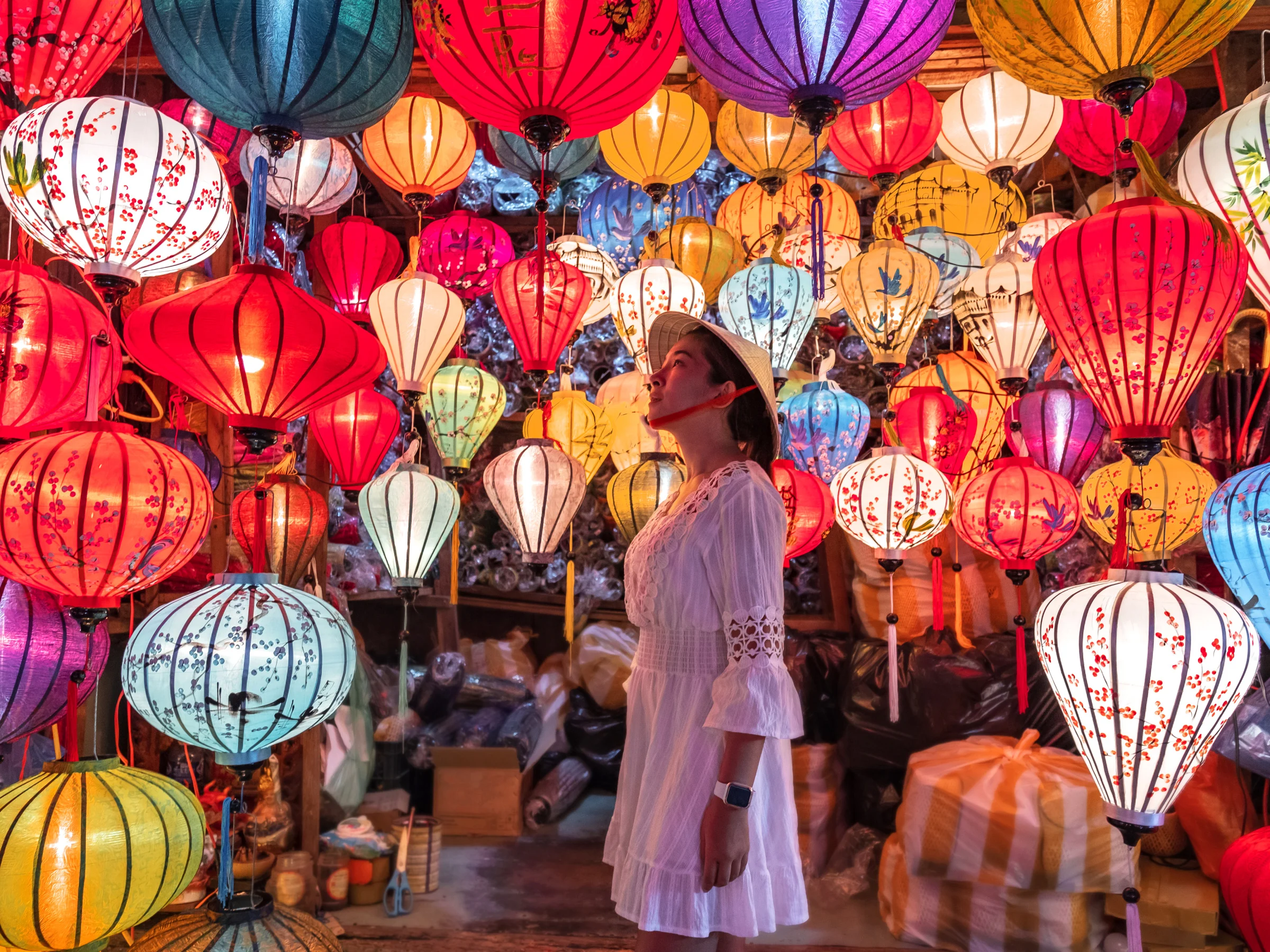
Hoi An Lantern Festival happens every month on the 14th day of the lunar calendar in Hoi An’s Old Town. It’s a special time when the streets are filled with colorful lanterns, making everything look magical.
People from near and far come together to join in the fun. They do traditional activities like putting lanterns on the river and making wishes for good luck. The lanterns represent hopes and dreams, and people believe releasing them brings happiness. During the festival, lots of music, dancing, and shows celebrate Hoi An’s culture. You can listen to Vietnamese music, watch dance performances, and see how lanterns are made. It’s a lively time!
A big part of the Lantern Festival is a parade with silk lanterns carried by locals in traditional clothes. They’re joined by musicians and dancers, making it a joyful procession through the Old Town. When night falls, the lanterns light up the streets, making everything look even more magical. Visitors can also join lantern-making workshops to create their lanterns to take home.
The Lantern Festival in Hoi An is a wonderful way to celebrate the town’s culture and community. Whether you’re watching the parade, making wishes, or enjoying the performances, it’s an experience you won’t forget!
6. Tailor Shops

Hoi An is famous for its skilled tailors, and getting custom-made clothing or accessories tailored there can be a wonderful experience. Whether you’re looking for a tailored suit, a traditional Vietnamese áo dài, or even some custom-fitted shirts or dresses, the tailors in Hoi An can work wonders. It’s a great way to get exactly what you want, perfectly fitted to your specifications, and often at a fraction of the cost you’d pay for similar quality elsewhere. Plus, it’s a fun and unique souvenir from your travels!
Remember to take your time wandering through the narrow streets and alleys, soaking in the unique atmosphere and capturing the essence of this ancient town.
Read more: A Comprehensive Guide To Weather In Hoi An Vietnam
Vietnam Hoi An: Full Moon Lantern Festival
The Full Moon Lantern Festival, also known as the Hoi An Lantern Festival, is a magical event held in Hoi An Old Town on the 14th day of every lunar month. The town is illuminated with thousands of colorful lanterns during this time, creating a mesmerizing spectacle. There are several things to look forward to at the Full Moon Lantern Festival:
1. Lantern Decorations
The entire town, including streets, shops, houses, and the riverbanks, is adorned with beautifully crafted lanterns in various shapes, sizes, and colors. The lanterns symbolize good luck, happiness, and prosperity.
2. Traditional Performances
Throughout the evening, you can enjoy traditional music, dance, and theatrical performances showcasing Vietnamese culture and heritage. These performances often take place in designated areas around the town.
3. Candlelit Offerings
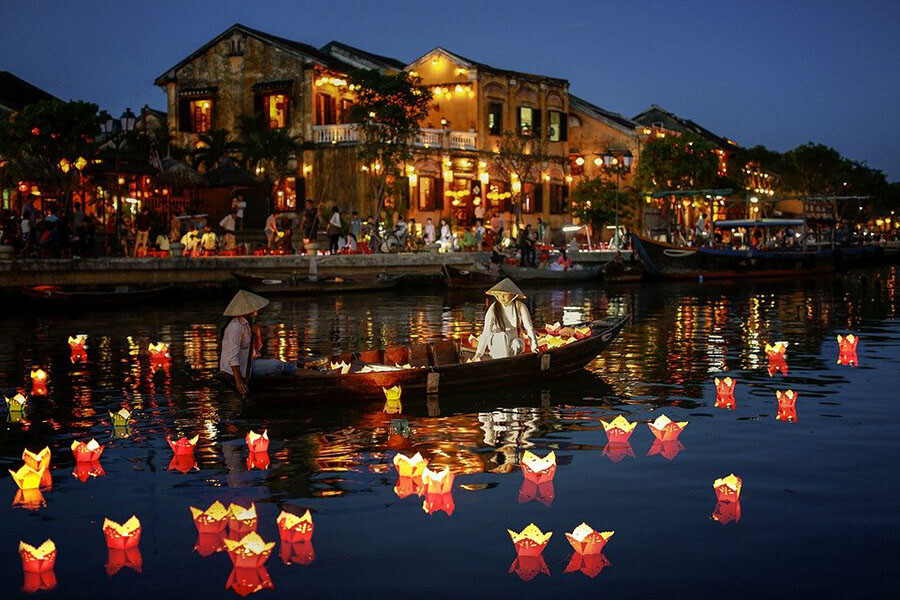
Visitors can make candlelit offerings at local temples and pagodas, participate in traditional rituals to pay respect to ancestors and seek blessings for the future.
4. Floating Lanterns on the River
One of the festival’s highlights is the release of floating lanterns onto the Thu Bon River. Visitors can purchase small paper lanterns, write their wishes or prayers on them, and release them onto the water, creating a breathtaking scene as the river is illuminated with flickering lights.
5. Food and Night Market
Indulge in various delicious Vietnamese street food and local delicacies at stalls and food vendors throughout the town. The night market also offers a wide range of souvenirs, handicrafts, and lanterns for sale.
6. Photography Opportunities
The Full Moon Lantern Festival provides ample opportunities for photographers to capture stunning images of the illuminated town, vibrant street scenes, and cultural performances.
Overall, the Full Moon Lantern Festival in Hoi An is a magical celebration of light, culture, and tradition, offering visitors a unique and unforgettable experience in this enchanting ancient town.
Read more: Top 10+ Incredibly Delicious And Crispy Banh Mi Hoi An Shops
Frequently Asked Questions
- What is Hoi An famous for?
Hoi An is renowned for its well-preserved Ancient Town, which features centuries-old architecture, colorful lanterns, and a rich cultural heritage. It’s also known for its culinary delights, tailor shops, and beautiful nearby beaches.
- How do I get to Hoi An Ancient town?
The nearest airport to Hoi An is in Da Nang, about a 30-minute drive away. You can take a taxi, shuttle bus, or private car to Hoi An from Da Nang. Additionally, buses and trains connect Hoi An to major cities like Hanoi and Ho Chi Minh City.
- When is the best time to visit Hoi An?
The best time to visit Hoi An is during the dry season, typically from February to August. Avoid the rainy season from September to January, as heavy rainfall can affect outdoor activities and sightseeing.
- What are the must-visit attractions in Hoi An?
Some must-visit attractions in Hoi An include the Japanese Covered Bridge, Assembly Halls, Tan Ky House, Hoi An Market, and the Thu Bon River. If you’re visiting during the lunar calendar’s 14th day, don’t miss the Full Moon Lantern Festival.
- Is Hoi safe for tourists?
Yes, Hoi An is generally considered safe for tourists. However, like any tourist destination, it’s essential to remain vigilant against petty theft and scams. Keep your belongings secure and be cautious when dealing with street vendors and tour operators.
- What should I eat in Hoi An?
Hoi An is known for its delicious cuisine, including specialties like cao lau (a noodle dish), banh mi (a Vietnamese sandwich), com ga (chicken rice), and fresh seafood. Be sure also to try the local street food and visit the night market for a culinary adventure.
- Can I get clothes tailored in Hoi An?
Hoi An is famous for its tailor shops, where you can get reasonably priced custom-made clothing. You’ll find many options if you’re looking for suits, dresses, or traditional Vietnamese ao dai.
- What outdoor activities are available in Hoi An?
In addition to exploring the Ancient Town, visitors can enjoy outdoor activities such as cycling tours, boat cruises along the Thu Bon River, and relaxing on the nearby beaches of An Bang and Cua Dai.
Read more: Travel Agency Vietnam: Best Travel Agency for Vietnam Tours

